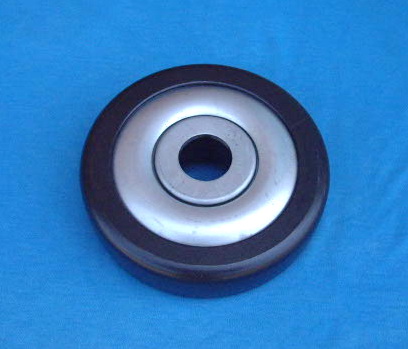In the dynamic landscape of industrial machinery, selecting the right conveyor bearing is crucial for optimizing efficiency and ensuring seamless operations. The significance of this decision cannot be overstated, as the performance and longevity of conveyor systems heavily rely on the quality of the bearings. In this guide, we will delve into the intricacies of choosing the perfect conveyor bearings, providing you with invaluable insights to make informed decisions.
What are Conveyor Bearings?
Before delving into the selection process, let's establish a fundamental understanding of conveyor bearings. These essential components facilitate smooth rotation and movement within the conveyor system. Conveyor bearings come in various types, including ball bearings, roller bearings, and sleeve bearings, each catering to specific operational needs.

Key Factors in Selection
Load Capacity and Durability
Load capacity is a critical consideration when selecting conveyor bearings. Understanding the weight the bearings will bear is paramount to avoid premature failure and ensure longevity. Opt for bearings with a load capacity that exceeds your system's requirements, providing a safety margin for unforeseen circumstances.
Durability is another crucial factor. Bearings exposed to harsh environments or heavy usage should be made from robust materials, such as stainless steel or high-grade alloys, to withstand wear and tear.
Environmental Conditions
The operating environment significantly influences the choice of conveyor bearings. For operations in extreme temperatures or corrosive surroundings, opting for specialized bearings designed for such conditions is imperative. This ensures the bearings can withstand the challenges posed by the environment, ultimately extending their lifespan and maintaining optimal functionality.
Precision and Tolerance Levels
Precision plays a pivotal role in the performance of conveyor bearings. High-precision bearings contribute to smoother operation and reduced friction, enhancing overall efficiency. Understanding tolerance levels is equally important, as it determines the bearing's ability to handle misalignments and variations in load distribution.
Types of Conveyor Bearings
Ball Bearings
Ball bearings are popular for their versatility and ability to handle both radial and thrust loads. They are ideal for applications where precise movement and low friction are crucial, making them a preferred choice for many conveyor systems.
Roller Bearings
Roller bearings excel in handling heavy loads, making them suitable for conveyor systems with substantial material movement. They are available in various configurations, including cylindrical, spherical, and tapered, catering to diverse operational needs.
Sleeve Bearings
Sleeve bearings are renowned for their simplicity and cost-effectiveness. While not as robust as ball or roller bearings, they find application in lighter-duty conveyor systems where economic considerations play a significant role.
Conclusion
In conclusion, selecting the right conveyor bearings is a nuanced process that demands careful consideration of load capacity, environmental conditions, precision, and bearing types. By prioritizing these factors, you ensure the seamless operation of your conveyor system and contribute to its overall longevity.
评论
发表评论